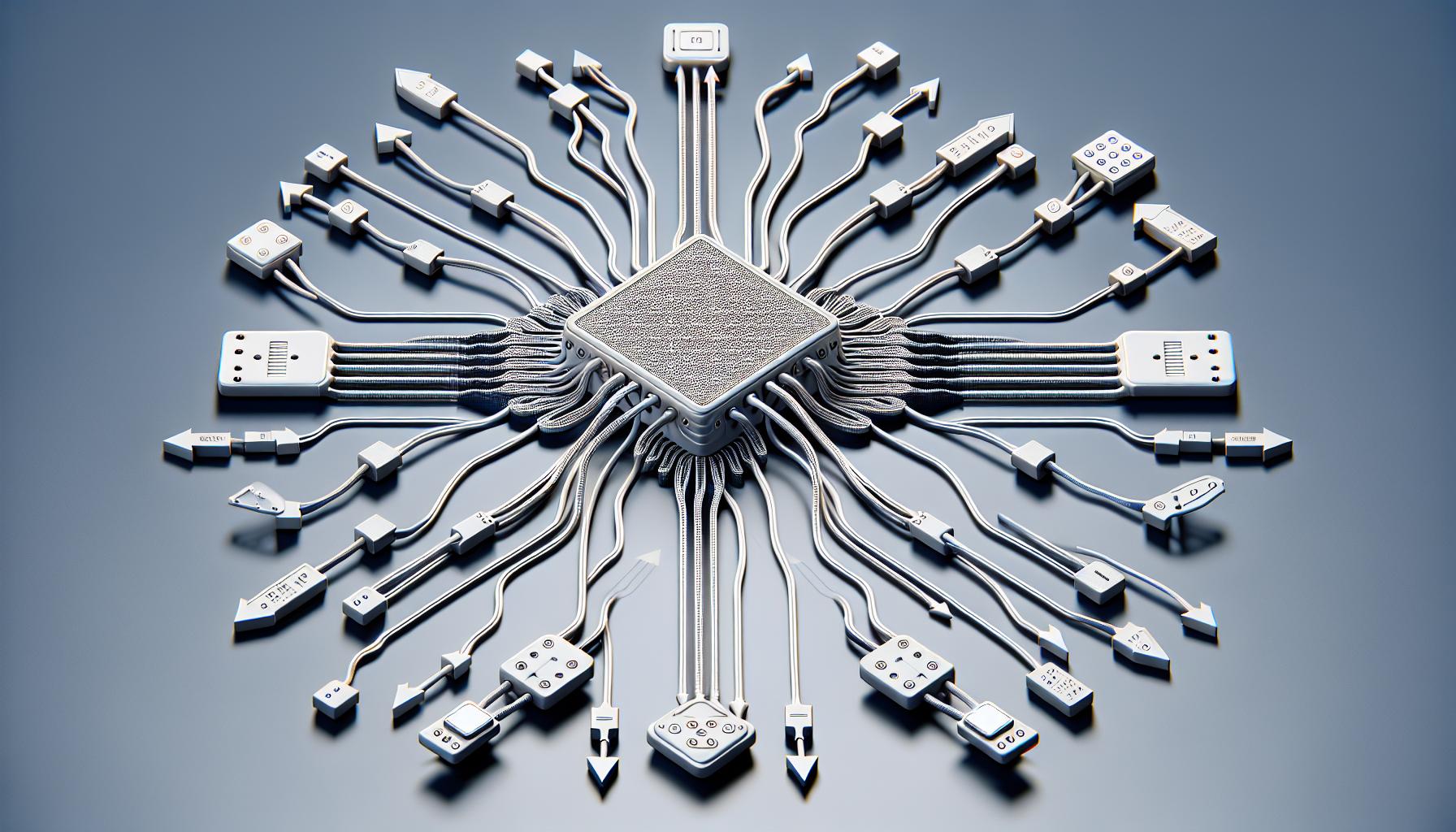BERT vs GPT: A Comparison of Models in Natural Language Processing
In the world of natural language processing (NLP), two models have sparked quite a debate: BERT and GPT. BERT, or Bidirectional Encoder Representations from Transformers, revolutionized the NLP landscape with its ability to understand the context of a word in relation to its surroundings.
On the other hand, we’ve got GPT, which is short for Generative Pretrained Transformer. This model’s claim to fame is its knack for generating human-like text. It’s an impressive feat, but how does it stack up against BERT? Let’s dive into the BERT vs GPT showdown and find out.
PowerBrain AI Chat App powered by ChatGPT & GPT-4
Download iOS: AI Chat
Download Android: AI Chat
Read more on our post about ChatGPT Apps & AI Chat App
Key Takeaways
- BERT and GPT are two significant models in natural language processing, each presenting unique advantages and challenges.
- BERT stands out with its bidirectional design, enabling a deeper understanding of context by considering both preceding and following words. It’s particularly suitable for tasks related to context-aware understanding, like entity recognition or question answering.
- Key features of BERT include multilingual support, adaptability through fine-tuning on small datasets, and the ability to handle long-term dependency. However, BERT demands significant computing power and memory and is not suitable for text generation.
- GPT, conversely, excels in text generation tasks due to its left-to-right, unidirectional design. Despite being less effective in capturing dependencies compared to BERT, it shines in generating cohesive and human-like texts.
- Notable aspects of GPT include its scalability, ability to handle large datasets, and proficiency in preserving consistency across extended texts. Yet, training requires considerable computational resources and doesn’t officially provide multilingual support.
- Both models can effectively tackle out-of-vocabulary words and excel in transfer learning. Their selection depends on each project’s unique needs and applications, with BERT leading in context-aware tasks and GPT in text generation.
Understanding BERT

Diving into the mechanics of BERT, it’s important to highlight that the primary innovation behind this model is its bidirectional nature. Unlike traditional NLP models, BERT reads both left-to-right and right-to-left. This allows it to understand the full context of a word by looking at the words that come before and after it. For instance, in the sentence “The cat sat on the mat,” BERT acquires a complete understanding of the word “cat” by considering both “the” and “sat.”
BERT’s deep learning capabilities are rooted in the Transformer model. Known for its self-attention mechanism, the Transformer model allows BERT to give different weights of “attention” to different words in a sentence. Simply put, it permits BERT to prioritize which words are more important for understanding the meaning.
Here are some of the core features that make BERT stand out in the NLP landscape:
- Multi-lingual support: BERT can be trained on text from any language, broadening its utilization in global applications.
- Fine-tuning: Despite requiring significant computational resources for training, BERT can be fine-tuned on small datasets, making it versatile and adaptable.
- Handling of long-term dependencies: BERT excels in recognizing relationships between words separated by several other words, thus rendering it highly effective in understanding complex sentence structures.
But, like any tool, BERT isn’t perfect. It demands a great deal of computing power and memory. With more than 340 million parameters to train, it’s no lightweight model. Additionally, due to its bidirectional nature, BERT cannot be used for text generation tasks, a sector where GPT shows promising results. Understanding these inherent trade-offs is key when choosing the right tool for your NLP tasks. Stay tuned for our next section, where we’ll shed light on the Generative Pretrained Transformer, better known by its moniker GPT.
Introducing GPT

Moving on from BERT, let’s take a closer look at GPT or Generative Pre-trained Transformer. OpenAI develops it and uses a similar Transformer model base but with a fundamentally different approach. Instead of training two separate models like BERT for encoding and decoding, GPT utilizes a single, more intricate model that emphasizes generation.
GPT primarily excels in tasks involving text generation. This is due, in large part, to the model’s unidirectional nature. GPT reads from left to right, processing every word in context with all preceding words. It may not capture dependencies as effectively as its bidirectional counterpart, BERT, but it comes out ahead when generating cohesive and contextually appropriate sentences or paragraphs.
Moreover, GPT excels when dealing with large datasets. Its ability to predict and generate subsequent words in a sentence and its unstructured and unsupervised nature make it powerful for generating realistic and articulate text. As an advanced language processing model, GPT’s effectiveness is derived from the combination of Transformer layers for procuring a sense of order and sequence in the textual content.
Read more about ChatGPT
Power of ChatGPT 5
ChatGPT vs InstructGPT
ChatGPT no restrictions
Connect Chat GPT to internet
ChatGPT no login
Gemini PRO vs Chat GPT-4
Another notable aspect of GPT is its scalability. OpenAI’s third iteration of the model, GPT-3, has seen exponential growth in its capacity, boasting a whopping 175 billion parameters. This huge scale-up has resulted in a model that can generate impressively human-like text. However, it’s important to note that this scale increases the computational requirements to train the model to meet that caliber.
In the end, despite the computational challenge, GPT stands out for its proficiency in generating human-like text, maintaining consistency across lengthy texts, and its scalability, paving the way for further advancements in the field of NLP.
While BERT and GPT have unique strengths and weaknesses, their combined potential is truly changing the landscape of natural language processing. The decision to opt for BERT or GPT really boils down to each project’s unique needs and applications.
Features of BERT

Let’s now dive into the myriad features that back BERT’s fame in the NLP space.
If I had to highlight one keyword for BERT, it’s undoubtedly context. With its bi-directional design, BERT reads and understands context from both the left and right of a word. This context-awareness gives it an upper hand for tasks like Named Entity Recognition (NER) and Question Answering.
Then comes BERT’s architecture, which is anchored in the ever-popular Transformer model. By stacking multiple transformer units, BERT embraces parallel computing. This, in turn, increases its efficiency when dealing with large texts, a feature that becomes crucial in today’s age of data enormity.
BERT shines bright in transfer learning, the ability to apply knowledge from one domain to another. Pre-training models on huge datasets and then fine-tuning them for specific tasks saves computational resources. Not to forget, it also results in high accuracy rates, often pushing past previous benchmarks.
Tokenization is another facet worth exploring in BERT. Instead of a single word, it breaks down the input into subwords or characters. This particularly helps when dealing with languages that don’t separate words with spaces.
Take a peek at the table below for a quick recap:
| Keyword | Description |
|---|---|
| Context | BERT reads left-to-right and right-to-left of a word |
| Transformer Model | BERT stacks multiple transformer units for efficiency |
| Transfer Learning | Pre-training on large datasets and fine-tuning later |
| Tokenization | Inputs are broken down into subwords or characters |
And that’s not the end of BERT’s feature list. Far from it. From multilingual support to the ability to handle out-of-vocabulary words, BERT continues to fascinate NLP experts and enthusiasts.
Features of GPT
While the previous sections have established why BERT is a powerhouse in the realm of Natural Language Processing (NLP), it’s time we pivot our focus to the next heavyweight, the Generative Pre-training Transformer (GPT). Like BERT, GPT is a Transformer-based model, but there are nuances that set the two apart.
Possibly the most striking facet of GPT is its unidirectional nature. Unlike BERT, GPT leverages a left-to-right architecture, meaning it solely predicts a word based on the previous words in a sentence. Some may view this as a limitation when compared to BERT’s bi-directional prowess, but this unique aspect of GPT enables a smoother generation of text that reads fluidly.
Another standout feature is GPT’s prodigious proficiency in transfer learning. Pre-training on a vast language corpus, GPT can be fine-tuned to excel in a multitude of tasks, from machine translation to text summarization, without task-specific alterations in the model architecture—the commonality in pre-training and fine-tuning grants GPT considerable versatility in language understanding tasks.
Moreover, GPT shines when it comes to dealing with Out-of-Vocabulary (OOV) words. As BERT tokenizes inputs into subwords, it is at an advantage when managing OOV words. However, GPT handles this adeptly using a byte pair encoding method, effectively breaking words into manageable units, making OOV problems less difficult.
Multilingual support is a significant consideration when evaluating NLP models. GPT does not officially provide multilingual support, contrary to BERT’s capabilities. However, OpenAI’s subsequent iteration of the model, GPT-3, does extend multilingual support, opening the door for further enhanced language understanding.
I’ll delve next into the comparison between these two NLP giants. Stay tuned as we break down their strengths and weaknesses in the face of varying NLP tasks.
BERT vs GPT Showdown
BERT and GPT storm the battlefield, each with its own unique arsenal. Let’s peel back the layers and understand both models’ and use cases’ strengths and weaknesses.
BERT’s bidirectional architecture serves as a powerful tool for understanding context in language. It looks at words within their entire context, both from left to right and right to left. This gives BERT a leg up in tasks requiring a deep understanding of context, like Named Entity Recognition and Question Answering. BERT’s multilingual support extends its reach to nearly all languages, making it a sort of lingua franca in the realm of NLP.
Turning to GPT, its approach to language is inherently different. With its unidirectional design, it’s like a train always moving forward. It looks at context from left to right, keeping things simple but less context-aware. Where GPT truly stands out is its text generation capability. GPT finds its true calling in language generation tasks, churning out coherent, contextually accurate sentences, like chatbots or story writing applications. Limited to English, though, GPT’s official offering still leaves something to be desired for multilingual applications.
It’s important to point out that both models excel at tackling out-of-vocabulary words, courtesy of their subword tokenization strategies. BERT breaks them into manageable, known pieces, whereas GPT bypasses them by predicting the next word based on its understanding of the previous ones.
While BERT and GPT offer different strengths, they share a common ground in Transfer Learning, efficiently applying knowledge gained from one task to another. In the table below, a side-by-side comparison guides us through this showdown.
| Model | Specialty | Multi-Language Support | Approach to OOV Words |
|---|---|---|---|
| BERT | Context-Aware Understanding, Transfer Learning | Yes | Subword Tokenization |
| GPT | Text Generation, Transfer Learning | No | Subword Tokenization |
Conclusion
So, it’s clear that both BERT and GPT have their unique strengths and applications. BERT deeply understands context and excels in tasks like Named Entity Recognition and Question Answering. Its extensive multilingual support makes it a versatile tool in the NLP toolbox. GPT, with its unidirectional design, stands out in text generation tasks, perfect for applications like chatbots and story writing. Regardless of their differences, both models effectively manage out-of-vocabulary words and leverage Transfer Learning for efficient task performance. Ultimately, the choice between BERT and GPT will depend on the specific needs of your NLP project.
What are BERT and GPT models?
BERT (Bidirectional Encoder Representations from Transformers) and GPT (Generative Pretrained Transformer) are sophisticated models used in natural language processing (NLP). They both leverage transfer learning and subword tokenization to handle diverse tasks and languages effectively.
How is BERT advantageous for Named Entity Recognition and Question Answering?
BERT’s bidirectional design helps it interpret context deeply. This context understanding is particularly crucial in Named Entity Recognition and question-answering tasks, where word meanings can change depending on the surrounding text.
Does GPT offer multilingual support like BERT?
While GPT excels in text generation tasks due to its unidirectional structure, it does not offer the same extensive multilingual support provided by BERT.
What makes GPT suitable for text-generation tasks?
GPT’s unidirectional design allows it to predict the likelihood of a word following a given set of words, which is a key feature needed in text generation tasks, such as story writing and maintaining conversational chatbots.
How do BERT and GPT handle out-of-vocabulary words?
Both BERT and GPT use a strategy called subword tokenization to manage out-of-vocabulary words. This involves breaking words down into smaller parts or subwords, reducing the chances of encountering an unknown word.
















